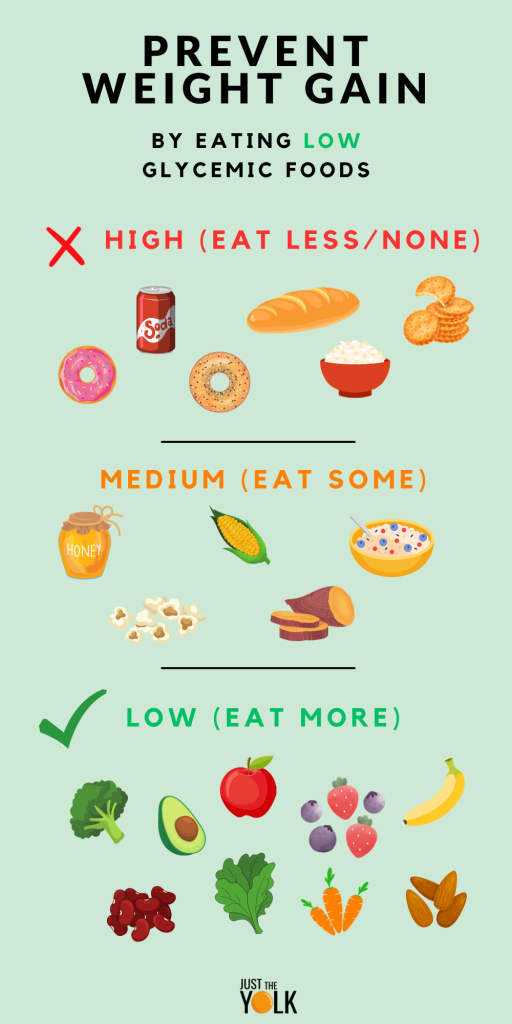“Overeating isn’t the primary cause of obesity. Instead, the process of gaining weight causes us to overeat” –D. S. Ludwig
The Yolk
Carbohydrate insulin model – high glycemic carbohydrate diets
- What are high glycemic carbohydrates?
- Carbohydrates that raise blood sugar quickly when eaten on their own
- Pairing with protein or fat may lessen the response
- Typically highly processed foods with little nutritional value
- All carbs do not fall in this category
- Examples of high glycemic carbohydrates
- White bread
- White rice
- Sugary cereals
- Crackers
- Cakes and doughnuts
- Candy
- Soda
- Sugary drinks and cocktails
- Corn and potato chips
- Pretzels
- Gatorade
- White potato products
What happens when we eat high glycemic carbohydrates on their own?
- 1. Insulin increases
- 2. Liver and muscle quickly take up glucose for energy
- 3. Lipogenesis starts (producing fat to store for later)
- 4. Triglycerides are released in bloodstream
- 5. Nutrients (if available) are absorbed too quickly
- 6. The brain thinks organs are starving
- 7. Hunger and cravings increase
- 8. Fat is stored
High carbohydrates and body fat
- When insulin is high, the body cannot burn fat
- Consuming high glycemic carbohydrates often encourages the body to store fat
- The body will not store and potentially burn fat if these conditions are met:
- Insulin levels are low
- Glucose is depleted (think vigorous exercise or ketones as fuel from a keto diet)
Perspective
- We have been told to “eat less and move more” but there are more hormonal factors at play with our ability to store fat, burn fat, and manage cravings
- Eating less when the diet still contains a lot of processed, high glycemic carbohydrates, the body will continue to be hungry and store fat
- A lower glycemic diet will allow the body to be able to control hunger signals and limit the cycle of weight gain
- Limit the amount of high glycemic carbohydrates in your daily diet
- If you must, pair food with fiber or protein to help lessen the insulin response
Resources


